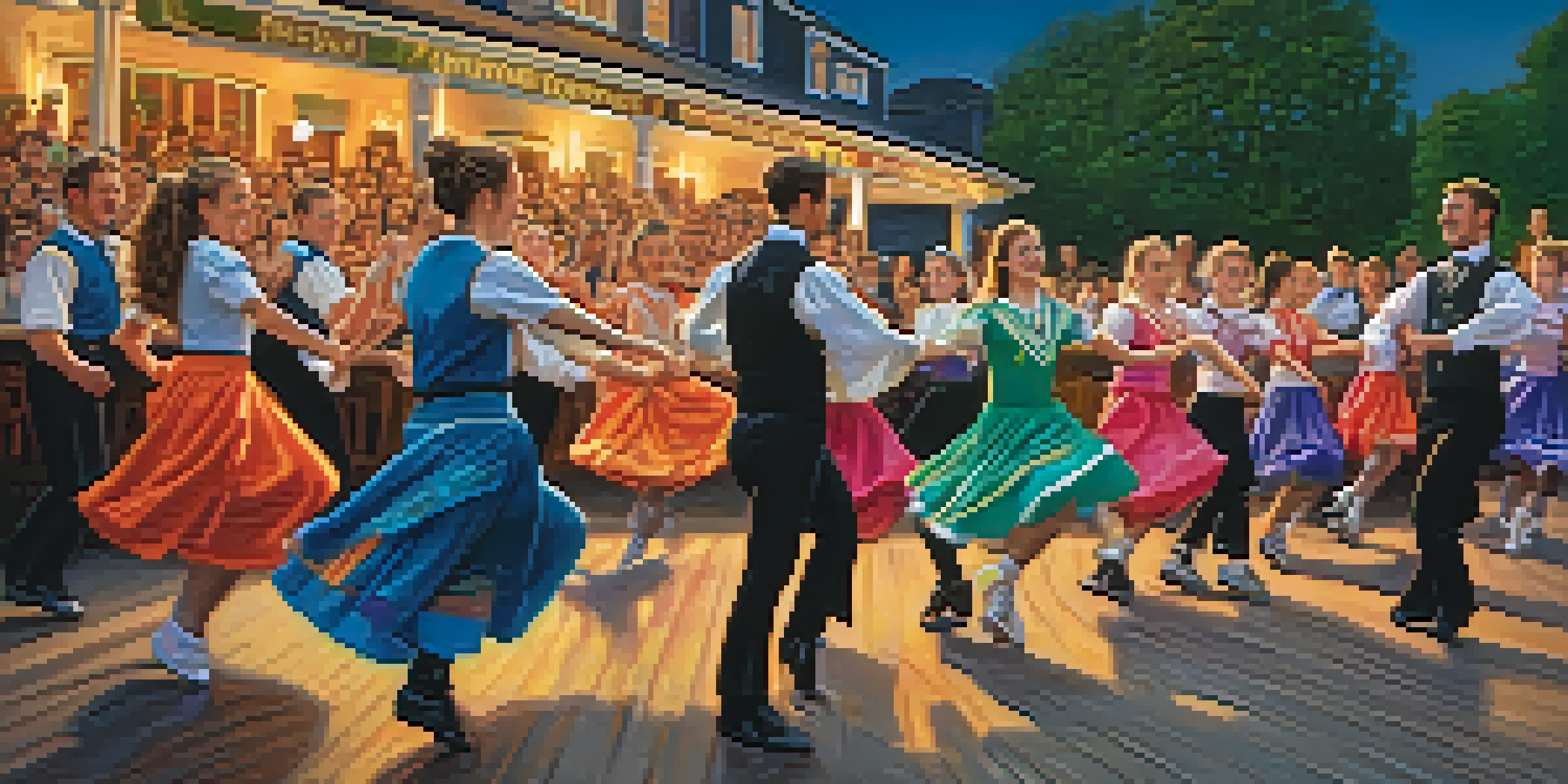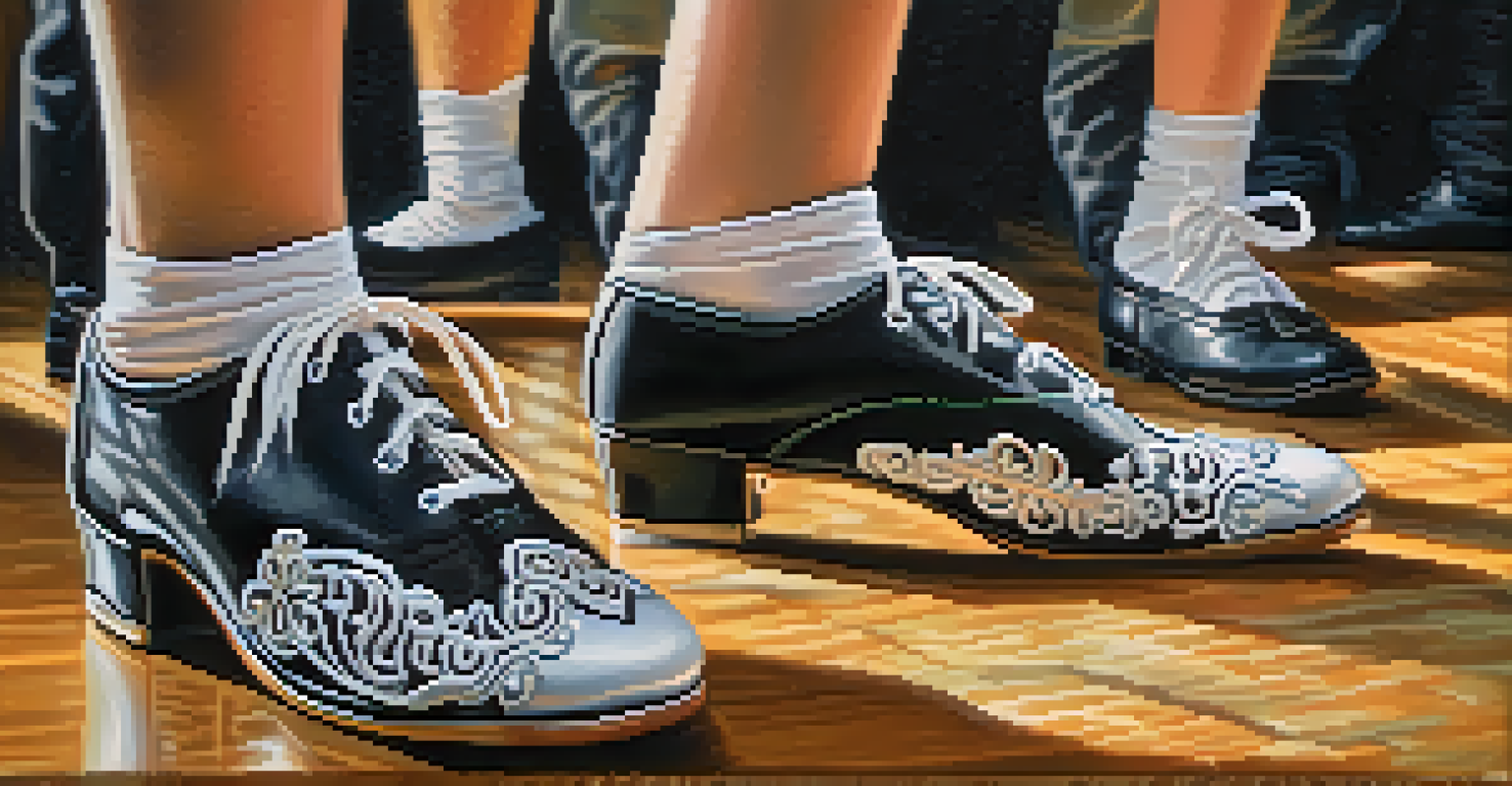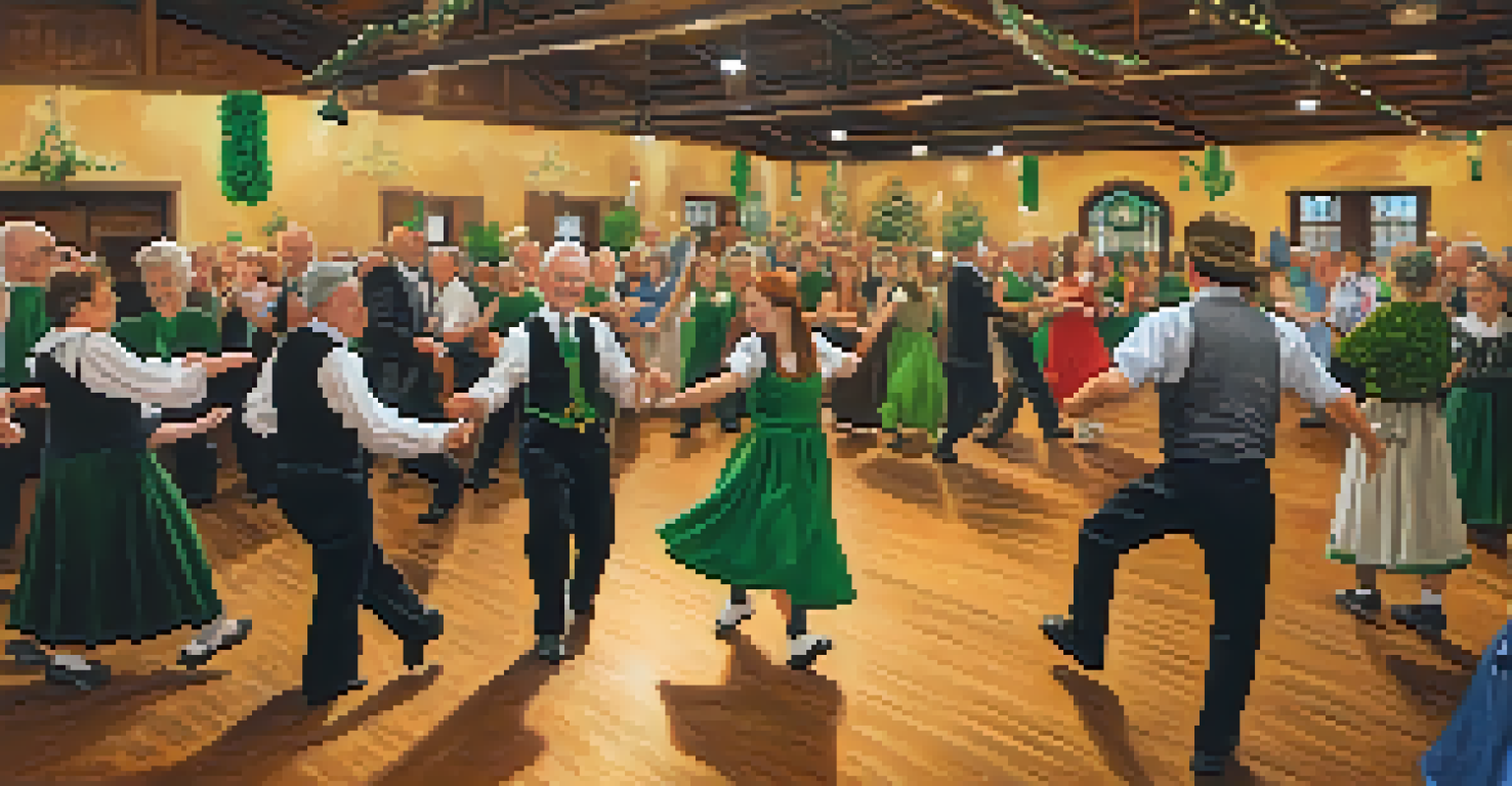Traditional Irish Dance: A Window into Cultural Heritage

The Roots of Traditional Irish Dance: A Cultural Timeline
Traditional Irish dance has deep historical roots that trace back to ancient Celtic rituals. These dances were often performed during festivals and celebrations, serving both as entertainment and a way to connect with the community. Over the centuries, the dance evolved, influenced by social changes and the blending of various cultural traditions.
Dance is the hidden language of the soul.
In the 18th and 19th centuries, Irish dance began to formalize, with the establishment of dance schools and competitions. This period marked a significant transformation where steps and styles became more standardized, leading to the creation of iconic forms such as step dancing. The influence of the diaspora also played a key role, as Irish immigrants brought their dance traditions to different parts of the world.
Today, traditional Irish dance is celebrated globally, showcasing its rich heritage. From local performances to international competitions, it has become a vibrant expression of Irish culture that continues to bring people together, illustrating the enduring legacy of its historical roots.
The Role of Music in Traditional Irish Dance
Music is the heartbeat of traditional Irish dance, providing rhythm and energy that drive the movements. Typically performed to lively jigs, reels, and hornpipes, the music creates an infectious atmosphere that invites participation. Instruments like the fiddle, accordion, and bodhrán (a traditional drum) are commonly featured, each adding its unique flavor to the performance.

The interplay between the dancer and the musician is crucial, often resulting in a dynamic exchange that enhances the overall experience. Dancers respond to the music's tempo and melody, showcasing improvisation and personal style while adhering to traditional steps. This symbiotic relationship between dance and music not only enriches the performance but also deepens cultural connections.
Irish Dance's Rich Cultural Roots
Traditional Irish dance has evolved from ancient Celtic rituals into a globally celebrated art form that fosters community connection.
Moreover, the revival of traditional Irish music in recent years has further invigorated the dance scene. New generations of musicians and dancers are collaborating, creating a vibrant fusion of old and new, ensuring that the traditions remain relevant while honoring their historical significance.
Styles of Traditional Irish Dance: A Closer Look
Traditional Irish dance encompasses a variety of styles, each with its distinct characteristics and history. The two primary forms are step dancing, which emphasizes intricate footwork, and céilí dancing, which focuses on group formations and community participation. Understanding these styles can enrich your appreciation of the performances.
To watch us dance is to hear our hearts speak.
Step dancing, often performed solo, showcases fast-paced footwork and high energy, making it a visual spectacle. Dancers wear special shoes that enhance the sounds of their movements, contributing to the overall auditory experience. In contrast, céilí dancing is more social, inviting everyone to join in, often featuring simple, repeated steps that make it accessible for all ages.
Both styles reflect different aspects of Irish culture—one highlighting individual skill and artistry, while the other fosters community and togetherness. This diversity within traditional Irish dance speaks to its adaptability and enduring appeal, allowing it to thrive in various settings, from competitive stages to casual gatherings.
The Importance of Costume in Irish Dance
Costumes play a vital role in traditional Irish dance, serving not just as attire but as a symbol of cultural identity. Dancers often wear brightly colored dresses or suits, adorned with intricate designs that reflect regional styles and personal flair. These outfits are designed to catch the eye, enhancing the visual impact of performances.
The materials and craftsmanship involved in creating these costumes are also noteworthy. Many dancers wear specially designed shoes that amplify the sound of their dancing, while the dresses are often made from high-quality fabrics that allow for ease of movement. This attention to detail elevates the performance and showcases the dancer's commitment to their art.
Music Drives Irish Dance
The vibrant interplay between traditional Irish music and dance creates an engaging atmosphere that enhances performances and cultural ties.
Furthermore, costumes can represent a dancer’s heritage and community affiliations, fostering a sense of pride. As the dance continues to evolve, so too do the costumes, with modern influences merging with traditional elements, creating a unique blend that celebrates the past while looking toward the future.
Traditional Irish Dance in Popular Culture
In recent years, traditional Irish dance has made significant inroads into popular culture, captivating audiences worldwide. Productions like 'Riverdance' and 'Lord of the Dance' have brought this art form to the forefront, combining breathtaking choreography with captivating music. These shows have not only entertained but also sparked interest in this rich cultural heritage.
The success of these performances has led to a renewed interest in traditional Irish dance classes, with many people eager to learn the art form. Dance schools have seen an influx of students, from children to adults, all wanting to connect with their cultural roots. This growth is a testament to the universal appeal of the dance, transcending borders and connecting people through movement.
Additionally, social media platforms have played a significant role in promoting traditional Irish dance. Videos showcasing impressive performances or dance challenges often go viral, further spreading awareness and appreciation for this cultural treasure. As a result, traditional Irish dance continues to thrive, finding new audiences and keeping the tradition alive.
The Community Aspect of Traditional Irish Dance
At its core, traditional Irish dance is about community, connection, and shared experiences. Many dancers start their journey in local dance schools, where they learn not just the steps but also the importance of camaraderie and support. This sense of belonging fosters lifelong friendships and creates a nurturing environment for growth and creativity.
Community events, such as céilí dances, bring people together in celebration of their heritage. These gatherings are often informal, encouraging participation from everyone, regardless of skill level. This inclusive spirit reinforces the idea that traditional Irish dance is not just about performance but also about shared joy and connection.
Community and Future of Irish Dance
The community aspect of traditional Irish dance promotes inclusivity and shared experiences, ensuring the art form remains relevant and cherished for future generations.
Moreover, the community aspect extends beyond the dance floor. Many dancers participate in cultural festivals and events, showcasing their skills while sharing the stories and traditions behind the dance. This exchange enriches the cultural tapestry and ensures that the legacy of traditional Irish dance is passed down through generations.
The Future of Traditional Irish Dance
As we look to the future, traditional Irish dance is poised for continued evolution while remaining rooted in its rich heritage. New generations of dancers and musicians are experimenting with styles, blending traditional elements with contemporary influences. This adaptability is crucial for keeping the art form vibrant and relevant in today's fast-paced world.
Innovations in choreography and performance venues are also emerging, allowing for a more diverse array of expressions within the tradition. Collaborations with other art forms, such as theatre and modern dance, are creating exciting new experiences that attract wider audiences. This fusion not only showcases the versatility of Irish dance but also encourages a broader appreciation of its cultural significance.

Ultimately, the future of traditional Irish dance lies in the hands of those who cherish and promote it. By nurturing the next generation of dancers and keeping the community spirit alive, we can ensure that this beautiful art form continues to thrive, inspiring countless others to embrace and celebrate their cultural heritage.